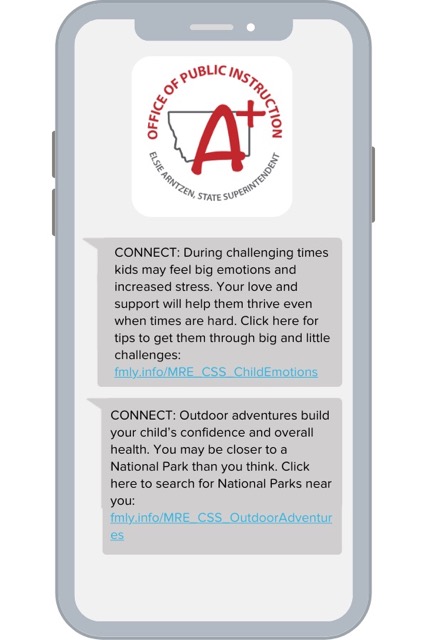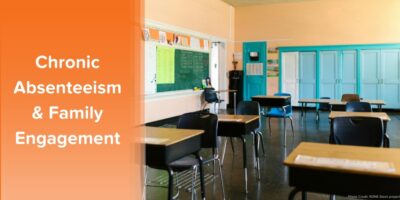By Maren Madalyn, contributing writer
When I worked in special education, I served a wide range of students bringing different languages, family religions, ethnicities, cultural histories, and lived experiences to our classroom. Navigating this rich diversity as an educator was profoundly humbling as I developed my cultural competency, a term increasingly used — and in some cases, drawing fire — within the K12 education community.
Case in point: One early November, I was eager to read a story about Día de los Muertos, a Mexican holiday commonly celebrated at this time of the year. Many of our students’ families came from Mexico, and the class seemed excited to share about their cultural identities.
As the kids piled onto the rug before me, I noticed that one second grader was visibly uninterested. This particular student had a history of inconsistent attendance, and our team was using every strategy possible to keep him and his family engaged and coming back.

I pressed onward with the story, hoping my animated reading skills and the opportunity to learn about his classmates would engage him… but to no avail.
Afterward, I asked this student, “What did you think of storytime today?”
He shrugged. “Fine.”
One-word responses were not typical for this student, so I gently encouraged him to share more. He sighed, crossed his arms, and said firmly, “I just want to read about Black kids. Why don’t we learn about Black kids at school?”
Later at pick-up, I spoke with his mother about today’s activities and shared the feedback this student had given me. It didn’t surprise her. In fact, during his bedtime reading routine, she noticed that her student repeatedly picked books that centered Black historical figures or kids. “It’s important to him, and us as a family,” she added.
Our team debriefed at the end of the school day and identified several insights:
- First, we made plans to better incorporate stories from and about the cultural diversity within the Black community into our classroom library and curriculum. That way, this student and his family could celebrate their history and heritage within our community.
- Second, we agreed to continue exploring Día de los Muertos the following school day as planned. Multiple students in our class whose families celebrated this holiday expressed so much joy while sharing about their ancestral altars, the food they cooked, and the importance of this holiday to them. These students also wanted to be seen, and their heritage too belonged in our classroom.
- Third, we each recommitted to building our own cultural awareness. How students and families experience their education at school is incredibly nuanced. For me, this was an opportunity to check my own assumptions, scaffold students to self-reflect on their own cultural experiences, and build cross-cultural awareness in the classroom community.
This second grader wanted to see himself represented in school learning materials and activities. It clearly impacted his desire to be at school. This experience demonstrates just how closely connected educators’ cultural competence and student attendance really are.
What is cultural competency, and why does it matter for student attendance?
Some educators may hear “cultural competency” and think of related terms like “cultural intelligence” (the ability to adapt to new cultural settings) or “intercultural exchanges” (the interchange of ideas and norms between individuals from different cultures to form meaningful relationships). Though similar, cultural competence and responsiveness both take these ideas further.
The IRIS Center describes cultural competence as “an ability to learn from and respectfully relate to other cultural backgrounds, heritages, and traditions. It comes from acknowledging and understanding one’s own culture and values while respecting those of others.”
In his Edutopia article, Principal Chris Lehmann builds on this definition through the lens of education:
“…As educational leaders, we come to school with our sense of who we are, and that unless we are reflective about our own identity and how it creates a lens through which we view the world, we will not be able to honor the identities of the students and faculty we serve.”
Chris Lehmann, Principal at Science Leadership Academy
A similar term, “cultural responsiveness,” can be viewed as how a professional uses tools and resources to enhance their cultural competence (American Speech-Language Hearing-Association).
Both of these terms share a common thread: every person’s experience of school is influenced by many factors, including cultural values. These varying perspectives impact each person’s beliefs about what it means to teach, learn, and grow. They also impact viewpoints on the importance of physical presence at school and how involved caregivers should be in a student’s education.
Key ingredients for successful cultural competency
For educators, both self awareness and sense of belonging are essential to building their cultural competence and encourage positive attendance rates.
Self awareness allows us as educators to learn from the myriad of perspectives, personal experiences, and funds of knowledge that families and students bring to a school community. It also ensures that, when we stumble or identify ways our schools do not acknowledge cultural experiences of students and families, we can shift our own perspectives and take action to create a more inclusive space that students want to participate in.
Creating a sense of belonging for all members of a community — caregivers, teachers, school leaders, students, etc. — is just as critical for great attendance.
When students and families feel like they are truly part of a school community, and that their needs and voices are heard, it lays the foundations for a more positive learning environment. And research has long shown the correlation between a healthy school climate and steady student attendance rates.

Cultural competency is a prerequisite for creating inclusive learning environments and encouraging steady school attendance. While navigating these nuances may seem like a daunting task, it’s this cultural diversity that strengthens a school community and deepens student engagement in learning.
Cultural competency attendance and family engagement are inextricably linked
Blending cultural competency with family engagement is a recipe for success. When families and caregivers join educators as partners in student learning, the entire school community benefits. Grades and test scores improve. Students arrive in classrooms ready to learn and well-regulated emotionally. Even teachers experience greater satisfaction.
But let’s return to the notion that each family member, student, and educator brings a unique perspective to a classroom, all influenced by factors like cultural values, home language, religious beliefs, ethnic diversity, and much more. These factors also impact how families approach their student’s education — and not all families see school attendance in the same light.
For instance, when I was a child, my parents saw education as a means to secure financial stability and safety. Attendance at school was considered extremely important; I rarely missed a day of school unless I was exceptionally ill or a family emergency happened.
My neighbor had a different experience. Her family valued spending time with their cultural community. She often missed school days to attend important services at their faith-based organization.
Neither of these experiences were “right” or “wrong” — just different. But both impacted our attendance at school.
It’s important for educators to connect with families, understand what matters most to them, what they envision their child’s success to look like, and connect these values and hopes for the future with their student’s learning journey, in the classroom and beyond.
Why invest in such efforts? It’s all about building trust. Culturally responsive family engagement strategies are an effective way to form trusting relationships with people from different backgrounds. Trust forges the kinds of spaces at school and in the community where students and families can bring their full selves to their learning — where they want to attend regularly.
Cultural competency in action: three stories from the field
Neither cultural competency nor family engagement come in a one-size-fits-all package. Each organization must discover what their community needs to uplift cultural diversity and tailor effective communication and collaboration strategies accordingly.
As inspiration for your team’s journey, ParentPowered curated four stories from the field, highlighting powerful ways that educators are leveraging cultural competency with their students and families to ensure all children thrive.
Culturally responsive leadership to tackle chronic absenteeism
In 2022, Darin A. Thompson knew that his school’s efforts to counter chronic absenteeism needed to radically change. In the wake of two chaotic school years, the high school principal in Henrico County, VA, saw an opportunity to tap into culturally responsive leadership strategies as a means for engaging disengaged students and cultivating an environment that students wanted to be part of — particularly Black students.
In his opinion article for EdWeek, Thompson wrote, “Deep-rooted historical inequities in K-12 education often leave Black students feeling disconnected and disengaged from their schools. In my school, where more than 4 out of 5 students are Black, this troubling disparity prompted me to take a more targeted approach to absenteeism.”
Thompson worked with his school team to shift from classic attendance monitoring and standardized intervention plans, to a more comprehensive approach that valued and affirmed the cultural diversity and identities of their students. They started with listening:
“We first conducted listening audits and focus groups with students to leverage their voices to capture their feedback for how we could make them feel more connected to the school. The process revealed that we needed to exercise more empathy for our students.”
Darin A. Thompson, High School Principal
From these listening strategies, the team collaborated to improve students’ experiences at school and encourage positive attendance, including:
- Revitalizing classroom interior spaces and decor around campus to better reflect students’ identities.
- Shifting attendance incentives to recognize not only students with high attendance rates, but also students whose attendance improved or demonstrated upward progress.
- Adjusting disciplinary practices by leveraging restorative practices to prevent more severe consequences.
The result? The rate of out-of-school suspensions, a significant contributor toward chronic absenteeism, decreased by more than half.
Read Thompson’s story for more reflections and resources related to culturally responsive school leadership.
The impact of culturally responsive social-emotional learning and student voice
Libby Woodfin is EdWeek’s Director of Publications for EL education, and a former teacher and school counselor. As part of an interview series, she explores why social-emotional learning (SEL) is so crucial for culturally responsive education.
Woodfin reflects on one student, Lillian, whose experiences with culturally relevant materials in her 5th-grade classroom offer insightful learnings to all educators.

“My favorite module was definitely the human-rights module,” Lililian recounted. “…In this module, we deeply looked into the Universal Declaration of Human Rights and read the book Esperanza Rising. I really loved this book because all of the details and events were very engaging, and it actually made me think of my own family’s experiences escaping for safety.”
Lillian’s family fled their home country to escape horrific and terrifying conditions, seeking refuge in the United States — and Esperanza’s story parallelled her own family’s lived experiences. “This kind of learning means a lot to me,” Lillian shared, “because I don’t want to come to school and learn about random things that don’t matter to this world.”
“[Research suggests that] not only should social-emotional learning be integrated with students’ academic work — but that the principles of culturally responsive education (CRE) can be applied to curriculum and instruction to enhance learning for students.”
Libby Woodfin, EdWeek Director of Publications for EL Education
Woodfin sees Lillian’s story as an important lesson for educators about the value of teaching practices that emphasize cross-cultural awareness — specifically efforts that allow students to bring their own knowledge and strengths to the table for their learning journey. This personal connection not only builds students’ SEL skills, but it also deepens their engagement — a prerequisite for strong school attendance.
Read the article to explore additional perspectives on cultural awareness and social-emotional learning.
Supporting migrant families in times of instability
Newcomer students face unique challenges. Not only are they potentially navigating an entirely new language, education system, and set of cultural norms, but many also have experienced adverse childhood experiences (ACEs) as a result of instability, which migrants working in agriculture across the U.S often experience.
The Montana MEP Huntley School District Project (formerly known as the Montana Migrant Education Program) recognizes that caregivers are often the constant for students going through such transitions and instability.
“I’m very aware of the stressors our families face regarding food and clothing insecurity and trying to pay their monthly bills,” explained Pat Lowthian, program manager at MEP. “Sometimes there’s one paycheck with many mouths to feed. We are trying our very best to lift families up.”
When newcomer families struggle to access basic needs or affordable transportation, the barriers to school attendance climb higher. Migrant families also bring their own cultural values and expectations related to education, which may impact their perspectives on the importance of being physically present at school.

Pat selected ParentPowered Trauma Informed to ensure newcomer families received the support they needed while honoring the ethnic diversity represented in their community. This investment was essential for families and students to have the capacity to not only navigate the instability of migrant life, but also to engage in their child’s education in a new country.
The family engagement program provides migrant families with strengths-based, accessible activities to support their students’ learning, while also educating them about the U.S. education system into which they’ve entered — all in a family’s home language.
“The [ParentPowered] messages helped me to understand my children better and how amazing they are.”
MEP Caregiver
Further, the curriculum aligns with the protective factors framework, reducing the risk of re-traumatizing migrant families and children who may have experienced ACEs.
Each of these supports provided through ParentPowered Trauma-Informed lays critical groundwork for students to engage in their learning and be present at school. Read the original case study to explore how this effective communication and community engagement strategy made all the difference for migrant families.
Nurture family engagement for strong attendance with ParentPowered
Cultural competency, family engagement, and student attendance go hand in hand. When educators invest in building their own cultural awareness and create inclusive environments that celebrate cultural diversity in its many forms, everyone thrives. Culturally responsive family engagement sets the stage for great attendance.
ParentPowered’s family engagement programs are all about planting the seeds that, over time, blossom into positive student engagement and deeper connections between educators and families — key ingredients for strong attendance in school. Join an upcoming info session to learn more about how our programs help your organization ensure that every family and every child can thrive, from birth through grade 12.
About the author
Maren Madalyn has worked at the intersection of K12 education and technology for over a decade, serving in roles ranging from counseling to customer success to product management. She blends this expertise with fluid writing and strategic problem-solving to help education organizations create thoughtful long-form content that empowers educators.









